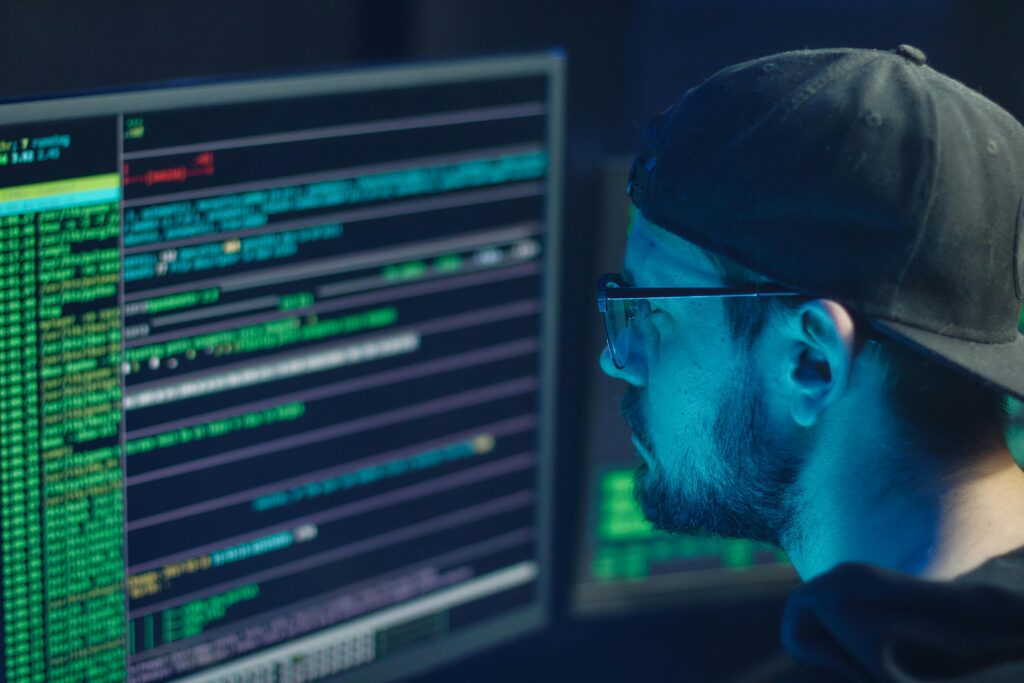Introduction
The dark web has long been a hub for illegal activities, from drug trafficking to stolen data sales. But a new, more dangerous trend is emerging: AI-as-a-service for hackers. Cybercriminals are now leveraging artificial intelligence to automate attacks, evade detection, and exploit vulnerabilities at an unprecedented scale.
This blog explores how hackers are using AI tools available on the dark web, the risks they pose, and what businesses and individuals can do to protect themselves.
What Is AI-as-a-Service on the Dark Web?
AI-as-a-service (AIaaS) refers to cloud-based AI tools that users can access without needing deep technical expertise. On the dark web, cybercriminals offer malicious AI services, including:
- Automated phishing kits – AI generates highly convincing fake emails and websites.
- Password-cracking tools – Machine learning accelerates brute-force attacks.
- Deepfake scams – AI-generated voices and videos impersonate executives for fraud.
- Malware optimization – AI helps malware evade antivirus detection.
These services are often sold on underground forums like Empire Market and Tor-based marketplaces, making AI-powered cybercrime accessible even to low-skilled hackers.
(External Link: Europol Report on AI in Cybercrime)
How Hackers Are Using AI-as-a-Service
1. AI-Powered Phishing Attacks
Traditional phishing relies on mass emails with poor grammar, but AI tools like ChatGPT-for-hacking (sold on dark web forums) craft flawless, personalized scams. Some AI services even analyze a victim’s social media to create hyper-targeted messages.
2. Automated Malware Development
AI helps hackers write polymorphic malware that constantly changes its code to avoid detection. Services like DeepLocker (originally an IBM research project) have been repurposed by criminals to create undetectable ransomware.
3. AI-Enhanced Social Engineering
With deepfake voice cloning, scammers impersonate CEOs to authorize fraudulent wire transfers. A notable case involved a UK energy firm losing $243,000 to an AI-generated voice scam (BBC Report).
4. AI-Driven Password Cracking
Tools like PassGAN (a generative adversarial network) can guess passwords 100x faster than traditional brute-force methods by learning from leaked password databases.
(External Link: MIT Technology Review on AI Password Crackers)
Real-World Cases of AI Cybercrime
- The ChatGPT Jailbreak for Malware – Hackers modified OpenAI’s ChatGPT to write malicious code, selling customized versions on the dark web (Wired Report).
- AI-Generated Fake IDs – Dark web vendors use StyleGAN to create realistic fake driver’s licenses for identity fraud.
- AI-Powered DDoS Attacks – Botnets now use machine learning to identify and exploit network weaknesses automatically.
How to Protect Against AI-Driven Cyberattacks
1. Strengthen Authentication
- Use multi-factor authentication (MFA) to block AI password-guessing attacks.
- Avoid reused passwords—consider a password manager like Bitwarden or 1Password.
2. Train Employees on AI Threats
- Conduct AI-aware phishing drills to help staff recognize deepfake scams.
- Verify financial requests via secondary channels (e.g., a phone call).
3. Deploy AI-Based Security Solutions
- Use AI-driven threat detection (e.g., Darktrace or CrowdStrike) to counter malicious AI.
- Keep software updated to patch vulnerabilities exploited by AI tools.
(External Link: CISA Guidelines on AI Cybersecurity)
The Future of AI Cybercrime
As AI becomes more advanced, experts predict:
- Fully autonomous hacking bots that self-improve via reinforcement learning.
- AI-generated disinformation campaigns manipulating elections and stock markets.
- AI-augmented ransomware that negotiates payments using chatbots.
Governments and cybersecurity firms are racing to regulate AI misuse, but the dark web’s anonymity makes enforcement difficult.
FAQs About Dark Web AI-as-a-Service
1. Can AI completely replace human hackers?
No, but it augments their capabilities, allowing less skilled criminals to launch sophisticated attacks.
2. How much does AI hacking tools cost on the dark web?
Prices range from 50forphishingkits∗∗to∗∗50forphishingkits∗∗to∗∗5,000+ for advanced deepfake services.
3. Is ChatGPT being used for hacking?
Yes, hackers have modified ChatGPT to write malware, though OpenAI actively blocks misuse.
4. Can AI-powered cyberattacks be detected?
Yes, AI-based security systems (like SentinelOne) can identify and block AI-driven threats.
5. Will AI make cybercrime unstoppable?
Not unstoppable, but defenses must evolve as AI tools become more accessible.
Conclusion
The rise of AI-as-a-service for hackers is transforming cybercrime, making attacks faster, stealthier, and more scalable. Businesses and individuals must adopt AI-aware security measures to stay ahead of these threats.
By understanding how cybercriminals exploit AI and implementing strong defenses, we can mitigate risks in this new era of digital warfare.





